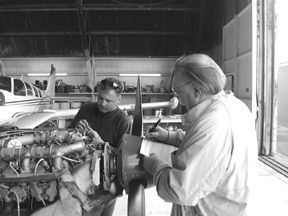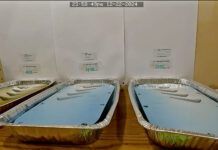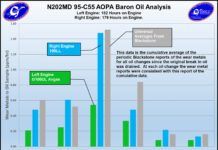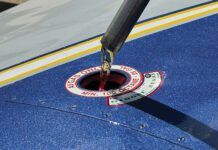
-by Paul Bertorelli
Call us cynical, but were spring-loaded to be skeptical about aircraft engine modifications in general but specifically those that claim more of something. More power, more speed, more climb rate, more economy.
While its true that some of these do deliver genuine performance gains, weve seen enough of them come and go-roller rockers, for instances and those little magnets on oil filters-to doubt the long-term value of anything added to an engine that wasnt bolted on at the factory. (Accepted rules of polite society restrain us from wisecracks about crankshafts.)
On the other hand, a handful of aftermarket mods do deliver the kind of performance that owners swear by to the extent that these products develop loyalty bordering on fanaticism. Without exaggerating much, we would say GAMIjectors fall into this category. Weve interviewed dozens of owners of these precision-calibrated fuel injection nozzles and have been hard-pressed to unearth a single unhappy customer. (Okay, we pressed hard and found one dissatisfied customer.)
On the odd chance that you havent read a single aviation magazine during the previous five years, lets review what these things do.
GAMIjectors first appeared during the summer of 1996, when we reported on what was then best described as a cult gadget. GAMIjectors were the launch product of General Aviation Modifications, Inc., an Ada, Oklahoma-based GA skunk works that has become a hotbed of engine research and development.
Since then, GAMI reports that it has sold some 10,000 sets of fuel nozzles for Lycoming and Continental fuel-injected four- and six-cylinder engines. GAMIs success with precision-calibrated injectors has led the company into other development pursuits, including improved cooling baffling for Bonanzas and an electronic ignition system that GAMI claims will allow aircraft engines to run on low-octane gas, once 100LL is phased out. More on that in a future issue. For now, lets reexamine GAMI precision injectors and answer these questions: do they work? Are they worth the money?
We installed GAMIjectors in our recently acquired Mooney 231 and we also had them in the Carolina Mud Hen, our not-so-trusty 201 that ended its days with an ignominious splat in a South Carolina salt flat after an engine failure last April. (The injectors had nothing to do with the engine failure.)
What They Do
To understand exactly what GAMIs precision injectors purport to do, its easiest to imagine an engine as not just a composite powerplant but as a series of individual engines each represented by a cylinder. Engineers have long known that the power output of a cylinder is governed by the fuel-to-air ratio, compression ratio and ignition timing, to name what might be considered the top three of a multitude of variables affecting how an engine runs and how much power it produces.
If the fuel/air ratio varies widely from cylinder to cylinder, each cylinder outputs different power than its neighbor and the result is an engine that isn’t as smooth running as it could be. Its also a fuel waster because leaning aggressively exaggerates the uneven power pulses from each cylinder, which the pilot senses as rough running or vibration. Truly efficient leaning isn’t possible because the leanest cylinders have to be run rich enough to forestall roughness, thus the richest cylinders get more fuel than they need.
By automotive standards, modern-and we use that term advisedly-aircraft engines are unsophisticated in the way they deliver fuel/air mixture to the cylinders and the variable ignition timing that has been common in car engines for years is only recently becoming available for aircraft, first with Unisons LASAR mags and more recently with FADEC systems. Although these new systems promise improved efficiency and better engine longevity, theyre too new to have established any significant record.
GAMIjectors, on the other hand, have been quietly improving engine efficiency, especially for owners of large-displacement Continental engines and a handful of Lycoming models. They work by correcting the poor fuel/air mixture distribution problem that most aircraft engines suffer. In its early research, GAMI discovered that the pipe-and-riser induction system used in many Continental engines distributes air unevenly but more or less consistently, a shortcoming thats aggravated by fuel injector nozzles that deliver wildly varying flows from nozzle to nozzle. The nozzles may actually dump more fuel into the cylinders with the least available air or starve those with the most air. Heretofore, there’s been no rhyme nor reason to matching fuel flow to air flow.
Because aircraft fuel injection systems are continuous flow design, not the pulsed or timed designs used in automotive engines, controlling the amount of fuel delivered to each cylinder can be done only by precisely calibrating the bore of each nozzle. And thats what GAMIjectors do.
GAMI has collected enough data by now to have developed stock sets of calibrated injectors for most engines but the core of its business remains tweaking fuel flows on a cylinder-by-cylinder basis for customers who provide their own performance data based on what GAMI calls a lean test.
What the lean test reveals is how well-or more often, how poorly-an engines stock nozzles deliver balanced fuel flow to each cylinder, matched to the available airflow through the induction system. Balanced means that the fuel flow is appropriate for the airflow reaching the cylinder and, as noted, you cant do much about the airflow other than correcting induction leaks.
The theory is that the leanest cylinders-that is, those with too little fuel flow from the nozzles-reach peak exhaust gas temperature first while the richest cylinders peak last. The difference in fuel flow-the spread-is where potential efficiency lies.
For our review of GAMIjectors, we first ran the lean test on our Mooney 231, which is equipped with a 210-HP six-cylinder Continental TSIO-360. The results of this test were in some ways typical, in some ways not.
Our total spread was we’ll within the range of what TSIO-360s typically exhibit but normally, cylinders 5 and 6 peak first, 1 and 2 peak last and the others are in the middle. On our aircraft, the spread between the first to reach peak-cylinder numbers 4 and 5 and the last, cylinder number 2-was 1.3 gallons, which is about average for this type of engine.
GAMIs chief engineer, George Braly, suggested that this atypical pattern indicated induction leaks in the upper deck piping and, indeed, this turned out to be the case. Although the leaks were minor, we threw some time and money at sealing them up.
Based on the data we provided before sealing the leaks, GAMI flowed a custom set of nozzles which we installed for a second round of testing. The results werent encouraging. When we again tried the lean test, the GPH spread to peak EGTs was obviously less-a lot less. We found that the spread between the first to peak and the last to peak was under .5 gallon. Good news. However, the engine ran rough at peak and wouldnt run acceptably smooth lean of peak at all, which is where the impressive efficiency gains are to be found.
More induction leaks? Bad timing? Magneto problems? We werent sure but Braly suggested an inflight magneto check at a lean mixture setting to diagnose the problem. And while the lean mag check yielded definite roughness on both magnetos, it didnt finger any specific plugs or mags. Frankly, the engine ran like crap at anything other than rich mixture settings.
Just to put some numbers on the test, we were typically running the engine at 65 percent power, which, at 125-degrees rich of peak TIT, the best power setting, yielded fuel flows in the 11.5 to 11.8 GPH range. Those are very close to POH numbers for fuel flow, although our airplane tends to be slower than book numbers.
With the GAMIjectors installed, we could lean the engine lean of peak to the 10-gallon range and although the temperatures were in line with a lower TIT and comfortably lower CHTs, the engine ran unacceptably rough and cruised more than 10 knots slower than the POH said it should have.
GAMI Visit
We had a trip planned to the midwest in mid-November so we detoured south for a visit to GAMIs Ada, Oklahoma shop, where we conducted a third test flight. GAMIs Braly suggested a look at the spark plugs, which led to the moderately expensive decision to replace them all. Several were badly eroded and others, although firing, were fouled with lead. (This argues for aggressive ground leaning, which we had not been doing.)
While we were at it, two of the injectors were reflowed, one to be .2 GPH leaner, the other .2 GPH richer. With the plugs installed, we tried another test flight. The results were, to put it modestly, dramatic. Each cylinder reached peak within a few tenths of a gallon and the engine was noticeably smoother in idle and in flight.
For leaning, GAMI recommends what it calls the big mixture pull. Rather than fuss with worrying the mixture out a tenth of a gallon at a time in search of peak EGT/TIT, Braly merely draws the mixture back in one deliberate, smooth pull until the airplane noticeably decelerates.
If the fuel/air ratio is balanced enough for the engine to run lean of peak EGT/TIT, this will reliably produce a lean setting in the 40- to 60-degree lean-of-peak range, variable by engine type.
To verify the pull, you can first establish a target fuel flow by more deliberate leaning, then use the target flow for the one-fell-swoop mixture pull. The advantage of the big pull is that it simplifies leaning and you sail past the peaks so quickly that overtemping isn’t a worry.
When we tried the big pull before the plug change, the engine instantly became stumble rough and the only remedy was to richen to 125-degrees rich of peak TIT; the POH recommendation. After the plug change, we found that pulling the mixture smoothly to perceptible deceleration yielded about 9.5 GPH with no roughness. Leaning further, we found that the engine would easily run 60- to 80-degrees lean-of-peak TIT without roughness, although with noticeable power loss and slower airspeed, which is to be expected.
For practical purposes, GAMI recommends doing the big pull, then restoring manifold pressure to a value consistent with fuel flow and airspeed you consider acceptable. And acceptable is a deliberate word here. On many engines-and ours is one of them-when running significantly lean of peak, youre off the published power charts so specific power percentages are somewhat meaningless. This doesnt matter since what youre most concerned with is keeping the engine temperatures within acceptable limits.
For our engine, thats CHTs below 380 degrees and TITs under about 1650 degrees. Hawking the tem peratures, says Braly, serves an effective monitor for what youre really concerned about: avoiding high peak cylinder pressures that can lead to detonation.
In Bralys view, leaning should be thought of as a red box centered on peak EGT/TIT. At high power settings-say 75 percent or higher-he says the boundaries of the red box run from 125 degrees rich of peak on the rich side to 25 degrees lean of peak on the lean side. The idea is to stay out of that middle ground between these two values, unless the engine is operating at low power. In other words, if youre going to run lean, run we’ll lean, if rich, run we’ll rich.
In our case, with the stock nozzles, our choice was limited to rich of peak only. With the GAMIjectors installed, the operating envelope expanded to allow either rich or lean operations, with equivalent engine smoothness at either setting but quite a difference in fuel flow.
And even for a small-displacement, low-horsepower engine, the fuel savings are hardly trivial. Rich of peak, in the mid-teens at about 65 percent power, we were truing between 155 and 160 knots at between 11.3 and 11.8 GPH before we installed the GAMIjectors. CHTs were occasionally high enough to require either slight richening or half cowl flaps.
With the GAMIjectors installed, we could lean to 9.5 GPH for true airspeeds in the 153- to 158-knot range, with significantly cooler CHTs and TITs and no need to open the cowl flaps. Leaning further, of course, cools the cylinders but also costs power and airspeed. Experimenting further, we found we could practically run the engine at 8.8 GPH, yielding airspeeds in the mid-140s and an endurance of nearly 8 hours. With a stiff tailwind, that makes 1200-mile non-stop trips possible.
Besides lower fuel flow and cooling, we think the additional benefit of GAMIjectors is this greater endurance and range. Over the course of a five-hour flight, the lower fuel flow yields 10 or 11 gallons of gas that otherwise wouldnt be available in exchange for 3 to 4 knots slower cruise speed. (Thats less than 10 minutes over the course of a five-hour trip.)
On many of our flights, this eliminates a fuel stop and given the tedium of a 45-minute climb to altitude and the descent at the fuel stop, this can shave a couple of hours off a long trip. Owners of large-displacement engines enjoy even more significant fuel savings and endurance/range benefits because theyre starting out at higher fuel burns and often carry more fuel than an aircraft with a smaller-displacement engine.
Conclusion
So are GAMIjectors must-have mods? For all Continental fuel-injected engines, we think the argument for installing them is compelling, especially for turbocharged models. GAMIs claims are clear and actually somewhat modest: with GAMIjectors, says the company, the fuel/air ratios will be balanced and your engine will run better. Other benefits accrue to include more consistent leaning and thus fuel savings.
We think the product delivers on this claim. However, results will be most dramatic in turbocharged engines and even some of these will respond better than others. GAMI tells us because of airflow shortcomings in the IO-520-WB TCM engines used in some Baron and the -NB models found in some Cessna twins, lean-of-peak operation isn’t always doable in these engines. They still benefit from smoother running and more efficient leaning on the rich side of peak, however.
A couple of cautions here: you may have to spend some money fixing induction leaks, replacing plugs or overhauling mags to get this lean thing to work right. Counting the injectors, the project could run into a couple of grand before youre done.
Further, we think you need a digital multi-cylinder engine monitor to get the most out of leaning with balanced fuel injectors. True, GAMI can-and does-send matched nozzles to owners who don’t have engine monitors based on historical data with the engine at hand. But the monitor will confirm how we’ll theyre working and, in our view, is an undeniable adjunct to safety.
According to owners, GAMIjectors have also achieved some success in large-displacement Lycoming engines, although the results are more impressive in Continental engines, which run much smoother to begin with. Even a GAMIjector-equipped Lycoming TIO-540 will still have an unpleasant underlying rumble that Continental engines simply don’t suffer.
As we reported in the November 1998 issue of Aviation Consumer, we also installed GAMIjectors in the IO-360-equipped Mooney 201 we owned. Although this smoothed the engine out a bit and made leaning less fussy, the normally aspirated Lyc didnt always run lean of peak smoothly. And even when it did, the airspeed loss was too great a tradeoff for under a gallon an hour of fuel savings.
In fairness, GAMI had recommended against installing the nozzles in the Lycoming four-banger because ours was already we’ll balanced. But we forged ahead for research purposes. We would describe the results as mixed, at best. Yes, the engine was smoother but perhaps not smooth enough to justify the $699 cost of four new nozzles.
Our results in the Mooney 231-which appear to be typical-are just shy of transformational if the airplane is operated lean of peak. Our fuel flows are up to 2 gallons lower than they previously were, with a 5-knot loss in airspeed.
And that raises the inevitable question: should the engine be operated lean of peak? The arguments for and against lean of peak have reached Biblical proportions and we grow weary of flogging the debate further.
We think seizing on whether the engine manufacturers approve lean of peak or not misses the point, for neither Lycoming nor Continental have published convincing recent research on this subject. GAMI has done the research, extensively, but in our view, the proof is in the operational experience.
Lean of peak is undeniably a fuel saver, EGTs, CHTs and TITs are cooler and there’s simply no engineering data to support the claim by many that lea- of-peak operations-if done correctly-will damage engines. There is, on the other hand, growing anecdotal evidence that engines run lean of peak show less valve and cylinder wear than those run rich of peak.
The long-term effects of lean-of-peak operations on the durability of small aircraft engines is still an unknown, in our view. The argument that leaner is cooler and cleaner is compelling but thus far were not convinced that this translates to a better shot at reaching TBO in general. We would like to see a controlled study on this focused on small aircraft operated as they typically are, which is a couple of hundred hours a year, at most.
We are convinced that if done properly, there’s no conceivable way that running an engine lean of peak can cause damage. The data simply doesnt support that lean of peak is, of itself, damaging.
Thats not to say that a GAMIjector-equipped engine has to be run lean of peak to benefit from the product. The engine will run smoother if the fuel flow is balanced. But if you want to sign on to the leaner-cleaner bandwagon and you believe the benefits are worth it-we do-you’ll want to run your engine lean of peak.
When it introduced GAMIjectors, GAMI promised a full refund to customers not happy with the product after a 30-day trial. Few if any modification companies offer such a generous deal. In that context, you cant go wrong with this product. Try the nozzles and if you don’t like them, send them back for a refund. This policy continues to make GAMIjectors one of the top values in the aircraft modification business.
Contact- GAMI, 2800 Airport Road, Hangar A, Ada, OK 74820; 580-436-4833; www.gami.com.
Also With This Article
Click here to view “Checklist.”
Click here to view “GAMIjector Price List.”
Click here to view “Before and After.”
Click here to view “What Customers Say.”





